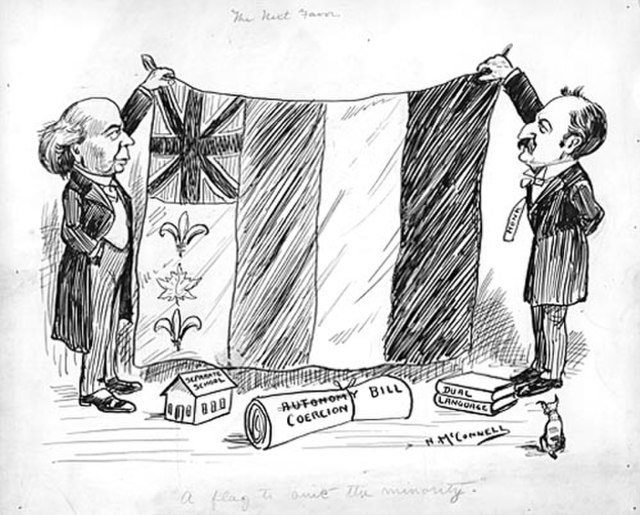Chinatowns in Canada generally exist in the large cities of Vancouver, Ottawa, Calgary, Edmonton, Toronto, and Montreal, and existed in some smaller towns throughout the history of Canada. Prior to 1900, almost all Chinese were located in British Columbia, but have spread throughout Canada thereafter. From 1923 to 1967, immigration from China was suspended due to exclusion laws. In 1997, the handover of Hong Kong to China caused many from there to flee to Canada due to uncertainties. Canada had about 25 Chinatowns across the country between the 1930s to 1940s, some of which have ceased to exist.
Chinese labourers working on the Canadian Pacific Railway in 1884
Chinese Dragon Dance in Calgary Chinatown
Millennium Gate on Pender Street in Vancouver's Chinatown
Entrance to Victoria's Chinatown.
Multiculturalism in Canada
Multiculturalism in Canada was officially adopted by the government during the 1970s and 1980s. The Canadian federal government has been described as the instigator of multiculturalism as an ideology because of its public emphasis on the social importance of immigration. The 1960s Royal Commission on Bilingualism and Biculturalism is often referred to as the origin of modern political awareness of multiculturalism, resulting in Canada being one of the most multicultural nations in the world. The official state policy of multiculturalism is often cited as one of Canada's significant accomplishments, and a key distinguishing element of Canadian identity and Canadian values.
Castle Mountain Internment Camp held immigrant prisoners of Ukrainian, Austrian, Hungarian and German descent.(1915)
Head Tax Receipt - The head tax was introduced in 1885, as a means of controlling Chinese immigration.
The Dr. Sun Yat-Sen Classical Chinese Garden in Vancouver's Chinatown is the first full-size Chinese or "scholars" garden built outside of China.
Political cartoon on Canada's bicultural identity showing a flag combining symbols of Britain, France and Canada, from 1911








